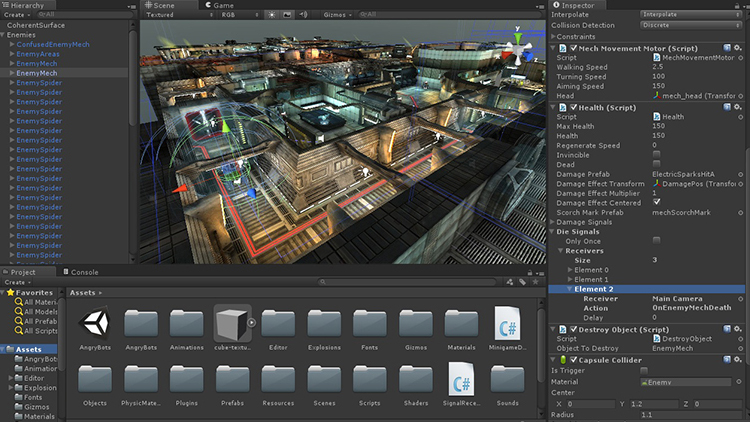Understanding the Importance of Testing Games
Testing and debugging are critical stages in game development to ensure your game is free of bugs and issues, and delivers a smooth and enjoyable experience to players. In this chapter, we’ll delve into the importance of testing games, debugging common errors, and playtesting to gather feedback for improvement.
Example 1: Testing Game Mechanics
Test each game mechanic thoroughly to identify potential bugs or inconsistencies. Create test cases for player interactions, such as movement, combat, and interactions with objects. Use Unity’s Play Mode to simulate gameplay scenarios and verify that mechanics behave as intended under various conditions.
Example 2: Debugging Common Errors
Debugging is the process of identifying and fixing errors or issues in your game code. Learn common debugging techniques, such as using breakpoints, logging messages, and inspecting variables. Use Unity’s built-in debugging tools, like the Console window and Inspector, to track down and resolve errors efficiently.
Example 3: Troubleshooting Gameplay Problems
Gameplay problems can arise from incorrect scripting, asset configurations, or design flaws. Analyze player feedback and reports to identify recurring gameplay issues. Use systematic troubleshooting methods to isolate and address problems, such as breaking down complex systems into smaller components for testing and debugging.
Example 4: Testing Cross-Platform Compatibility
Ensure your game runs smoothly on different platforms and devices by testing cross-platform compatibility. Build and deploy your game to various platforms, such as PC, mobile, and consoles. Test performance, controls, and user interface elements on each platform to ensure consistency and usability.
Example 5: Playtesting with Focus Groups
Organize playtesting sessions with focus groups to gather feedback from target players. Invite testers from diverse backgrounds and skill levels to provide different perspectives on your game. Observe testers as they play your game and collect feedback on gameplay mechanics, difficulty balance, bugs, and overall enjoyment.
Example 6: Analyzing User Data
Collect and analyze user data to gain insights into player behavior and preferences. Use analytics tools like Unity Analytics or third-party services to track player interactions, session lengths, and retention rates. Analyze gameplay metrics to identify areas for improvement and optimize game design and mechanics accordingly.
Example 7: Implementing Automated Testing
Automated testing streamlines the testing process by automatically running predefined test cases and scenarios. Write test scripts using Unity Test Framework or third-party testing frameworks to automate repetitive testing tasks. Run automated tests regularly to catch regressions and ensure new changes don’t introduce new bugs.
Example 8: Performance Testing and Optimization
Performance testing ensures your game runs smoothly and efficiently on various devices and hardware configurations. Use profiling tools like Unity Profiler to identify performance bottlenecks, such as high CPU usage, memory leaks, or inefficient rendering. Optimize game performance by reducing unnecessary resource usage and improving code efficiency.
Example 9: Stress Testing Multiplayer Games
Stress test multiplayer games to assess server performance and scalability under heavy loads. Simulate high player concurrency and network traffic to identify potential bottlenecks and server-side issues. Monitor server metrics and player connections during stress tests to ensure server stability and responsiveness.
Example 10: Iterative Testing and Feedback Loop
Game testing is an iterative process that continues throughout the development lifecycle. Incorporate feedback from testing sessions into your development workflow and prioritize bug fixes and improvements accordingly. Continuously iterate on your game design, mechanics, and content based on player feedback to deliver a polished and enjoyable gaming experience.
By following these testing and debugging practices and incorporating them into your game development workflow, you’ll ensure your game meets high quality standards and delivers a rewarding experience to players. Testing and debugging may be time-consuming and challenging, but the insights gained and improvements made will ultimately result in a better game that resonates with your audience.

Leave a Reply